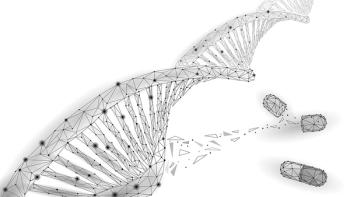
- BioPharm International-07-01-2017
- Volume 30
- Issue 7
Biosafety Concerns of Single-Use Components
Single-use bags containing toxic or hazardous materials required special handling.
A significant concern related to single-use equipment is its ability to withstand extreme conditions, such as sudden changes in pressure that could cause bags to rupture. This circumstance is of particular concern for operators handling toxic or potentially hazardous materials. BioPharm International spoke to Brian Petuch, corporate biosafety officer at Merck, to learn what specific aspects about single-use components present the biggest concerns.
BioPharm: What are challenges of the conversion from stainless steel to bags--particularly in terms of pressure and gas exhaust?
Petuch: I’m not aware of exhaust and backpressure valves installed in bags. To meet the National Institutes of Health (NIH) rDNA guidelines Appendix K at BSL-2 or higher, you must maintain backpressure at the lowest possible (1). On the inlet side, my concern is two-fold. Are there pressure-relief devices to prevent full supply pressure from reaching the bag? The second concern is overpressure following restart on power failure. Are there pressure sensors or a startup algorithm to prevent a sudden surge when aeration restarts? Another issue is backpressure related to exhaust filter blinding due to humidity or foam. Larger filter surface areas should be offered, as well as support structures so the filters can drain condensate. Perhaps making bag pressure sensors standard would make sense to prevent rupture.
BioPharm: Single-use systems are increasingly being used in recombinant virus production. What are some specific concerns with single use for this application?
Petuch: Again, users must follow the NIH rDNA guidelines Appendix K, as many recombinant viruses are classified as BSL-2LS even if used for gene therapy (1). Accidental releases can result in employee exposures. With lentiviruses or AAV, you need to be concerned with potential neoplastic disease. Also, do we know the physiological outcome of excess gene copies? From a waste viewpoint, how are used bags containing virus handled? Autoclaving is sufficient, but bag size can create issues, as well as film melting during the autoclave cycle. Access to disinfection/recycling technology becomes important.
Reference
1. National Institutes of Health, “
Article Details
BioPharm International
Volume 30, Number 7
July 2017
Page: 15
Citation
When referring to this article, please cite it as R. Hernandez, “Biosafety Concerns of Single-Use Components," BioPharm International 30 (7) 2017.
Articles in this issue
over 8 years ago
Laboratory Data Integrity Benefits from Electronic Systemsover 8 years ago
Do You Listen to What Your Data are Telling You?over 8 years ago
Matching Tools to Biophysical Analysis Demandsover 8 years ago
Tale of Two Financial Trendsover 8 years ago
Inspections: The Value of the Opening Presentationover 8 years ago
Balancing Protocols for Leachablesover 8 years ago
FDA Continues to Promote Quality Drug Productionover 8 years ago
Contract Manufacturing Through the YearsNewsletter
Stay at the forefront of biopharmaceutical innovation—subscribe to BioPharm International for expert insights on drug development, manufacturing, compliance, and more.





